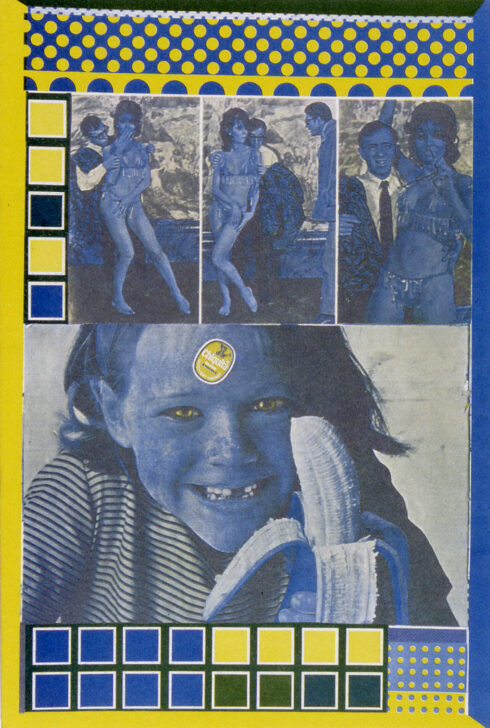Early mental traits of 300 geniuses
Sir Eduardo Paolozzi ; Richard Davis; Editions Alecto

Description
Subject Matter:
Like many of his contemporaries, Paolozzi used new printing techniques as a way to engage with modern mass media's new visual culture. At the same time, the photomechanical process made the work look mechanically manufactured rather than hand-made, in the traditional artistic sense. Therefore after he modified, transformed, and assembled the source image(s), the medium would allow for a more uniform final image.
This print is one of a large series of 50 prints included in the 1970 portfolio, which was a second edition of an earlier group of slightly-larger prints titled "Moonstrips Empire News." While the first series was strictly produced as screenprints, this second series "General Dynamic F.U.N." includes works of photolithography, like this one. The themes seen in this portfolio are different in style and subject matter from other Pop works of the period, but engage with the images of a modern mass media, looking beyond just advertising and publicity images. Likewise, the title of the portfolio alludes to the General Dynamics Corporation, who was the manufacturer of the F-111 fighter used during the Vietnam War—the same one referenced in James Rosenquist monumental painting "F-111."
In this work, Paolozzi continues this series of satircal commentaries on contemporary life. The title references a controversial text by Catherine M. Cox titled "The Early Mental Traits of Three Hundred Geniuses," which was the second volume in Genetic Studies of Genius edited by Lewis M. Terman (1926, republished in 1959) and was a study on eminent "geniuses" born between 1450 and 1850. This high minded idea of studying geniuses is juxtaposed with a striptease at the top and a smiling child at the bottom. While the sticker on the child's head seems to focus attention on the head/brain as a source of intelligence, the child's smile with its missing teeth and the phallic banana make the thought humorous. Also, the top images show two nerdy-looking men being easily distracted, tempted by the scantily clad woman—their intellect is compromised by desires of the flesh.
Physical Description:
This is a photolithograph in blue and yellow with a series of photographic images and geometric patterning. At the top, there is a band of polka-dots in three sizes. The next band has five squares on the left and to the right three photographs; these three photographs are a sequential series of shots showing a woman in a shiny bikini and two men touching and looking at her. Below this register, there is one large scene of a girl and a banana, with a Chiquita sticker placed on the child's forehead. The main image here is in blue but the child's eyes and the sticker are in yellow. At the bottom of the print, there is a double row of squares on the left and then two sets of polka-dots on the right.
Usage Rights:
If you are interested in using an image for a publication, please visit https://umma.umich.edu/request-image/ for more information and to fill out the online Image Rights and Reproductions Request Form.